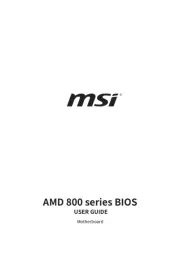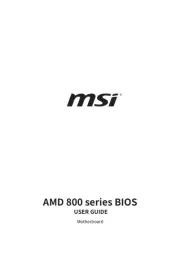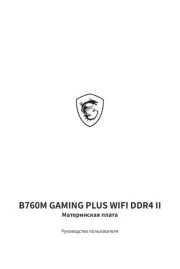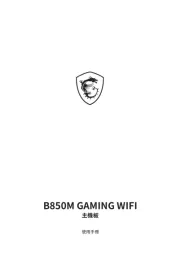Gigabyte GA-B250M-DS3H Manual
Læs gratis den danske manual til Gigabyte GA-B250M-DS3H (41 sider) i kategorien Bundkort. Denne vejledning er vurderet som hjælpsom af 8 personer og har en gennemsnitlig bedømmelse på 4.9 stjerner ud af 4.5 anmeldelser.
Har du et spørgsmål om Gigabyte GA-B250M-DS3H, eller vil du spørge andre brugere om produktet?

Produkt Specifikationer
| Mærke: | Gigabyte |
| Kategori: | Bundkort |
| Model: | GA-B250M-DS3H |
| Bredde: | 193 mm |
| Dybde: | 226 mm |
| Antal HDMI-porte: | 1 |
| Ethernet LAN-porte (RJ-45): | 1 |
| Antal USB 2.0-porte: | 2 |
| Antal USB 3.2 Gen 1 (3.1 Gen 1) type-A-porte: | 4 |
| Udgange til hovedtelefoner: | 1 |
| Ethernet LAN: | Ja |
| Lyd-output kanaler: | 7.1 kanaler |
| Strømkilde type: | ATX |
| Harmoniseret systemkode (HS): | 84733020 |
| Maksimal intern hukommelse: | 64 GB |
| Mikrofonindgang: | Ja |
| Understøttede Linux-operativsystemer: | Ja |
| Processorproducent: | Intel |
| Antal VGA-porte (D-sub): | 1 |
| Ethernet-grænsefladetype: | Hurtigt ethernet |
| Komponent til: | PC |
| Understøttet datalagringsdrev typer: | HDD & SSD |
| Antal PS/2-porte: | 1 |
| Processor sokkel: | LGA 1151 (stik H4) |
| PCI Express x16 slots: | 1 |
| Kompatibel processor serie: | Intel Celeron, Intel Pentium |
| Bundkort chipset familie: | Intel |
| Bundkort chipsæt: | Intel® B250 |
| Understøttede hukommelsestyper: | DDR4-SDRAM |
| Antal hukommelsesstik: | 4 |
| Hukommelses slots type: | DIMM |
| Ikke-fejlkorrigerende kode: | Ja |
| Understøttede hukommelsesclock-hastigheder: | 2133,2400 Mhz |
| Ikke-bufferet hukommelse: | Ja |
| Antal M.2 (M) slots: | 1 |
| Antal SATA III-stik: | 6 |
| Hukommelseskanaler: | To-kanals |
| USB 2.0-stik: | 6 |
| USB 3.2 Gen 1 (3.1 Gen 1) stik: | 6 |
| S/PDIF-udgangsstik: | Ja |
| CPU-ventilatorstik: | Ja |
| Lydstik på frontpanel: | Ja |
| Antal DVI-D-porte: | 1 |
| Motherboard form faktor: | micro ATX |
| PCI Ekspres x1 slots: | 2 |
| BIOS-type: | UEFI AMI |
| BIOS-hukommelsesstørrelse: | 128 Mbit |
| ACPI-version: | 5.0 |
| Nulstil CMOS-jumper: | Ja |
| TPM-stik: | Ja |
| Intel® ekstrem hukommelse profil (XMP): | Ja |
| EPS strømstik (8-pin): | Ja |
| Stik til frontpanel: | Ja |
| Intel® Core i3/i5/i7/i9 serie: | i3-xxx, i5-xxx, i7-xxx |
| Understøttede hukommelsesmodulkapaciteter: | 1GB, 2GB, 4GB, 8GB, 16GB |
| Intel® Optane™ Memory Ready: | Ja |
Har du brug for hjælp?
Hvis du har brug for hjælp til Gigabyte GA-B250M-DS3H stil et spørgsmål nedenfor, og andre brugere vil svare dig
Bundkort Gigabyte Manualer



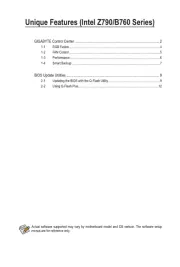

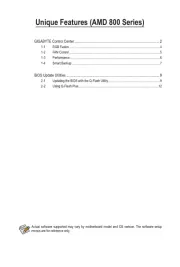




Bundkort Manualer
- NZXT
- Intel
- Elitegroup
- Zotac
- Asus
- Festo
- Raspberry Pi
- Sharkoon
- AOpen
- EPoX
- Supermicro
- Advantech
- Biostar
- Asrock
- Foxconn
Nyeste Bundkort Manualer






